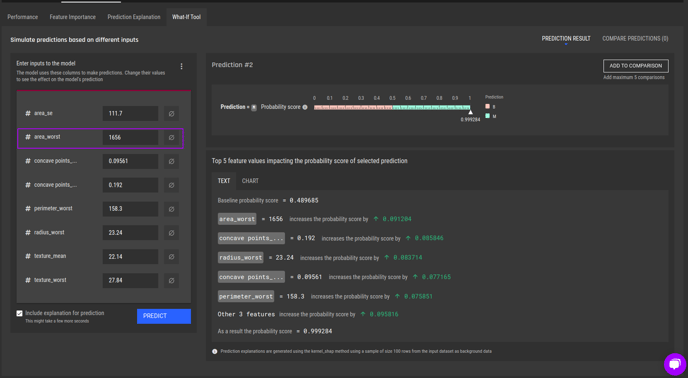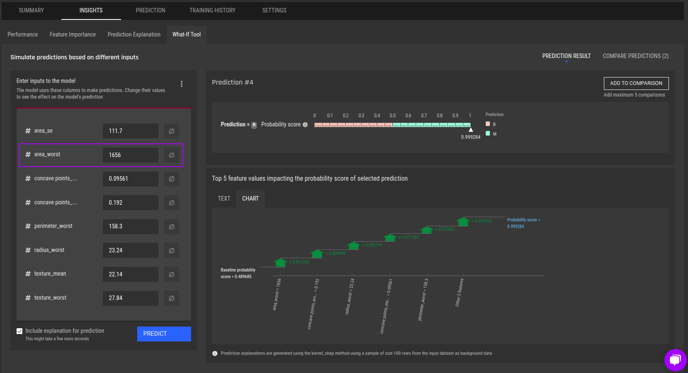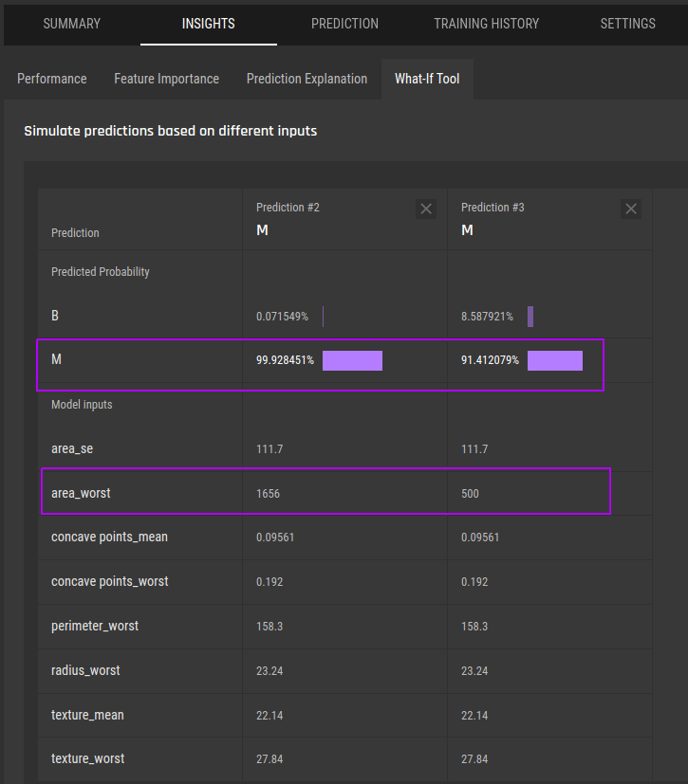What-if analysis is a useful feature for model explainability in the AI & Analytics Engine, which allows you to check a model's prediction quickly.
What-if tool is a useful feature to understand classification and regression models on the AI & Analytics Engine. The main purpose of this feature is to sense-check the model to understand how the prediction changes when the input changes. With this tool, you can:
-
Take a particular instance of interest from the sample in the prediction explanation page, and populate it in the what-if tool, and then change the inputs to see how the predictions change.
-
Populate a random sample from the training data and do the same process.
-
Quickly get a prediction for a given set of inputs without uploading a file or use code to call the prediction API.
In addition, you can optionally see prediction explanations on how each feature value impacted the model’s prediction described using text or visualized using charts.
Below example shows the What-if tool for a binary classification model developed for the Breast Cancer Wisconsin (Diagnostic) dataset. As seen in the following screenshots, with the given values for input columns, the instance has a 99.92% chance of being M (Malignant). Also the the impact of each feature on model’s prediction can be seen as both text explanations and charts.
 What-if tool output for an example binary classification task
What-if tool output for an example binary classification task
 What-if tool output as an example binary classification task (feature impact as a chart)
What-if tool output as an example binary classification task (feature impact as a chart)
You can also compare the prediction results between different input scenarios. With the example above, decreasing the value of area_worst from 1656 to 500 reduces the chance of being M (malignant) by around 8.5% (see below).
 Comparing prediction results using what-if tool
Comparing prediction results using what-if tool
This article walks you through the process of carrying out batch prediction.
